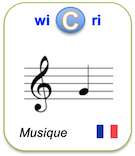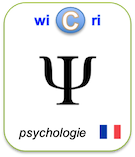The intrapsychic and the interpersonal in movement psychotherapy
Identifieur interne : 000072 ( Main/Corpus ); précédent : 000071; suivant : 000073The intrapsychic and the interpersonal in movement psychotherapy
Auteurs : Erma Dosamantes-AlpersonSource :
- American Journal of Dance Therapy [ 0146-3721 ] ; 1979.
Abstract
Abstract: The adaptive function of two states of consciousness and corollary movement experiences is described. Movement in which a relaxed state of attention is maintained on inner kinesthetic sensations and imagery is contrasted with movement which is characterized by conscious, active interacting with the external world of people and events. Clinical examples from individual and group psychotherapy sessions are cited to demonstrate how meaning and conflict resolution may be achieved by clients while moving in either mode.
Url:
DOI: 10.1007/BF02579546
Links to Exploration step
ISTEX:76C41715504423BC477CC9717D7BD749AEA9EF7ALe document en format XML
<record><TEI wicri:istexFullTextTei="biblStruct"><teiHeader><fileDesc><titleStmt><title xml:lang="en">The intrapsychic and the interpersonal in movement psychotherapy</title><author><name sortKey="Dosamantes Alperson, Erma" sort="Dosamantes Alperson, Erma" uniqKey="Dosamantes Alperson E" first="Erma" last="Dosamantes-Alperson">Erma Dosamantes-Alperson</name><affiliation><mods:affiliation>Department of Dance, UCLA, Graduate Movement Therapy Program, 405 Hilgard Avenue, 90024, Los Angeles, California</mods:affiliation></affiliation></author></titleStmt><publicationStmt><idno type="wicri:source">ISTEX</idno><idno type="RBID">ISTEX:76C41715504423BC477CC9717D7BD749AEA9EF7A</idno><date when="1979" year="1979">1979</date><idno type="doi">10.1007/BF02579546</idno><idno type="url">https://api.istex.fr/document/76C41715504423BC477CC9717D7BD749AEA9EF7A/fulltext/pdf</idno><idno type="wicri:Area/Main/Corpus">000072</idno><idno type="wicri:explorRef" wicri:stream="Main" wicri:step="Corpus" wicri:corpus="ISTEX">000072</idno></publicationStmt><sourceDesc><biblStruct><analytic><title level="a" type="main" xml:lang="en">The intrapsychic and the interpersonal in movement psychotherapy</title><author><name sortKey="Dosamantes Alperson, Erma" sort="Dosamantes Alperson, Erma" uniqKey="Dosamantes Alperson E" first="Erma" last="Dosamantes-Alperson">Erma Dosamantes-Alperson</name><affiliation><mods:affiliation>Department of Dance, UCLA, Graduate Movement Therapy Program, 405 Hilgard Avenue, 90024, Los Angeles, California</mods:affiliation></affiliation></author></analytic><monogr></monogr><series><title level="j">American Journal of Dance Therapy</title><title level="j" type="abbrev">Am J Dance Ther</title><idno type="ISSN">0146-3721</idno><idno type="eISSN">1573-3262</idno><imprint><publisher>Kluwer Academic Publishers</publisher><pubPlace>Dordrecht</pubPlace><date>1979</date><biblScope unit="vol">3</biblScope><biblScope unit="issue">1</biblScope><biblScope unit="page" from="20">20</biblScope><biblScope unit="page" to="31">31</biblScope></imprint><idno type="ISSN">0146-3721</idno></series><idno type="istex">76C41715504423BC477CC9717D7BD749AEA9EF7A</idno><idno type="DOI">10.1007/BF02579546</idno><idno type="ArticleID">Art4</idno><idno type="ArticleID">BF02579546</idno></biblStruct></sourceDesc><seriesStmt><idno type="ISSN">0146-3721</idno></seriesStmt></fileDesc><profileDesc><textClass></textClass><langUsage><language ident="en">en</language></langUsage></profileDesc></teiHeader><front><div type="abstract" xml:lang="en">Abstract: The adaptive function of two states of consciousness and corollary movement experiences is described. Movement in which a relaxed state of attention is maintained on inner kinesthetic sensations and imagery is contrasted with movement which is characterized by conscious, active interacting with the external world of people and events. Clinical examples from individual and group psychotherapy sessions are cited to demonstrate how meaning and conflict resolution may be achieved by clients while moving in either mode.</div></front></TEI><istex><corpusName>springer</corpusName><author><json:item><name>Erma Dosamantes-Alperson Ph.D., DTR</name><affiliations><json:string>Department of Dance, UCLA, Graduate Movement Therapy Program, 405 Hilgard Avenue, 90024, Los Angeles, California</json:string></affiliations></json:item></author><genre><json:string>Original Paper</json:string></genre><host><volume>3</volume><pages><last>31</last><first>20</first></pages><issn><json:string>0146-3721</json:string></issn><issue>1</issue><subject><json:item><value>Education (general)</value></json:item><json:item><value>Clinical Psychology</value></json:item><json:item><value>Health Psychology</value></json:item><json:item><value>Personality & Social Psychology</value></json:item></subject><genre><json:string>Archive Journal</json:string></genre><language><json:string>unknown</json:string></language><title>American Journal of Dance Therapy</title><publicationDate>1979</publicationDate><copyrightDate>1979</copyrightDate></host><language><json:string>eng</json:string></language><abstract>Abstract: The adaptive function of two states of consciousness and corollary movement experiences is described. Movement in which a relaxed state of attention is maintained on inner kinesthetic sensations and imagery is contrasted with movement which is characterized by conscious, active interacting with the external world of people and events. Clinical examples from individual and group psychotherapy sessions are cited to demonstrate how meaning and conflict resolution may be achieved by clients while moving in either mode.</abstract><qualityIndicators><score>4.744</score><pdfVersion>1.3</pdfVersion><pdfPageSize>576 x 810 pts</pdfPageSize><refBibsNative>false</refBibsNative><abstractCharCount>530</abstractCharCount><pdfWordCount>3820</pdfWordCount><pdfCharCount>23448</pdfCharCount><pdfPageCount>12</pdfPageCount><abstractWordCount>77 </abstractWordCount></qualityIndicators><title>The intrapsychic and the interpersonal in movement psychotherapy</title><copyrightDate>1979</copyrightDate><doi><json:string>10.1007/BF02579546</json:string></doi><id>76C41715504423BC477CC9717D7BD749AEA9EF7A</id><fulltext><json:item><original>true</original><mimetype>application/pdf</mimetype><extension>pdf</extension><uri>https://api.istex.fr/document/76C41715504423BC477CC9717D7BD749AEA9EF7A/fulltext/pdf</uri></json:item><json:item><original>false</original><mimetype>application/zip</mimetype><extension>zip</extension><uri>https://api.istex.fr/document/76C41715504423BC477CC9717D7BD749AEA9EF7A/fulltext/zip</uri></json:item><istex:fulltextTEI uri="https://api.istex.fr/document/76C41715504423BC477CC9717D7BD749AEA9EF7A/fulltext/tei"><teiHeader type="text"><fileDesc><titleStmt><title level="a" type="main" xml:lang="en">The intrapsychic and the interpersonal in movement psychotherapy</title></titleStmt><publicationStmt><authority>ISTEX</authority><publisher>Kluwer Academic Publishers</publisher><pubPlace>Dordrecht</pubPlace><date>1979</date></publicationStmt><notesStmt><note>Presented at the Thirteenth Annual Conference of the American Dance Therapy Association, Seattle, Washington, October 1978.</note></notesStmt><sourceDesc><biblStruct type="inbook"><analytic><title level="a" type="main" xml:lang="en">The intrapsychic and the interpersonal in movement psychotherapy</title><author corresp="yes"><persName><forename type="first">Erma </forename><surname>Dosamantes-Alperson</surname><roleName type="degree">Ph.D., DTR</roleName></persName><note type="biography">Administrative Coordinator</note><affiliation>Administrative Coordinator</affiliation><affiliation>Department of Dance, UCLA, Graduate Movement Therapy Program, 405 Hilgard Avenue, 90024, Los Angeles, California</affiliation></author></analytic><monogr><title level="j">American Journal of Dance Therapy</title><title level="j" type="abbrev">Am J Dance Ther</title><idno type="JournalID">10465</idno><idno type="pISSN">0146-3721</idno><idno type="eISSN">1573-3262</idno><idno type="IssueArticleCount">8</idno><idno type="VolumeIssueCount">2</idno><imprint><publisher>Kluwer Academic Publishers</publisher><pubPlace>Dordrecht</pubPlace><date>1979</date><biblScope unit="vol">3</biblScope><biblScope unit="issue">1</biblScope><biblScope unit="page" from="20">20</biblScope><biblScope unit="page" to="31">31</biblScope></imprint></monogr><idno type="istex">76C41715504423BC477CC9717D7BD749AEA9EF7A</idno><idno type="DOI">10.1007/BF02579546</idno><idno type="ArticleID">Art4</idno><idno type="ArticleID">BF02579546</idno></biblStruct></sourceDesc></fileDesc><profileDesc><creation><date>1979</date></creation><langUsage><language ident="en">en</language></langUsage><abstract xml:lang="en"><p>Abstract: The adaptive function of two states of consciousness and corollary movement experiences is described. Movement in which a relaxed state of attention is maintained on inner kinesthetic sensations and imagery is contrasted with movement which is characterized by conscious, active interacting with the external world of people and events. Clinical examples from individual and group psychotherapy sessions are cited to demonstrate how meaning and conflict resolution may be achieved by clients while moving in either mode.</p></abstract><textClass><keywords scheme="Journal Subject"><list><head>Psychology</head><item><term>Education (general)</term></item><item><term>Clinical Psychology</term></item><item><term>Health Psychology</term></item><item><term>Personality & Social Psychology</term></item></list></keywords></textClass></profileDesc></teiHeader></istex:fulltextTEI><json:item><original>false</original><mimetype>text/plain</mimetype><extension>txt</extension><uri>https://api.istex.fr/document/76C41715504423BC477CC9717D7BD749AEA9EF7A/fulltext/txt</uri></json:item></fulltext><metadata><istex:metadataXml wicri:clean="Springer, Publisher found" wicri:toSee="no header"><istex:xmlDeclaration>version="1.0" encoding="UTF-8"</istex:xmlDeclaration><istex:docType PUBLIC="-//Springer-Verlag//DTD A++ V2.4//EN" URI="http://devel.springer.de/A++/V2.4/DTD/A++V2.4.dtd" name="istex:docType"></istex:docType><istex:document><Publisher><PublisherInfo><PublisherName>Kluwer Academic Publishers</PublisherName><PublisherLocation>Dordrecht</PublisherLocation></PublisherInfo><Journal><JournalInfo JournalProductType="ArchiveJournal" NumberingStyle="Unnumbered"><JournalID>10465</JournalID><JournalPrintISSN>0146-3721</JournalPrintISSN><JournalElectronicISSN>1573-3262</JournalElectronicISSN><JournalTitle>American Journal of Dance Therapy</JournalTitle><JournalAbbreviatedTitle>Am J Dance Ther</JournalAbbreviatedTitle><JournalSubjectGroup><JournalSubject Type="Primary">Psychology</JournalSubject><JournalSubject Type="Secondary">Education (general)</JournalSubject><JournalSubject Type="Secondary">Clinical Psychology</JournalSubject><JournalSubject Type="Secondary">Health Psychology</JournalSubject><JournalSubject Type="Secondary">Personality & Social Psychology</JournalSubject></JournalSubjectGroup></JournalInfo><Volume><VolumeInfo TocLevels="0" VolumeType="Regular"><VolumeIDStart>3</VolumeIDStart><VolumeIDEnd>3</VolumeIDEnd><VolumeIssueCount>2</VolumeIssueCount></VolumeInfo><Issue IssueType="Regular"><IssueInfo TocLevels="0"><IssueIDStart>1</IssueIDStart><IssueIDEnd>1</IssueIDEnd><IssueArticleCount>8</IssueArticleCount><IssueHistory><CoverDate><DateString>Fall 1979</DateString><Year>1979</Year><Month>9</Month></CoverDate></IssueHistory><IssueCopyright><CopyrightHolderName>The American Dance Therapy Association, Inc.</CopyrightHolderName><CopyrightYear>1979</CopyrightYear></IssueCopyright></IssueInfo><Article ID="Art4"><ArticleInfo ArticleType="OriginalPaper" ContainsESM="No" Language="En" NumberingStyle="Unnumbered" TocLevels="0"><ArticleID>BF02579546</ArticleID><ArticleDOI>10.1007/BF02579546</ArticleDOI><ArticleSequenceNumber>4</ArticleSequenceNumber><ArticleTitle Language="En">The intrapsychic and the interpersonal in movement psychotherapy</ArticleTitle><ArticleFirstPage>20</ArticleFirstPage><ArticleLastPage>31</ArticleLastPage><ArticleHistory><RegistrationDate><Year>2007</Year><Month>2</Month><Day>19</Day></RegistrationDate></ArticleHistory><ArticleCopyright><CopyrightHolderName>American Dance Therapy Association, Inc</CopyrightHolderName><CopyrightYear>1979</CopyrightYear></ArticleCopyright><ArticleGrants Type="Regular"><MetadataGrant Grant="OpenAccess"></MetadataGrant><AbstractGrant Grant="OpenAccess"></AbstractGrant><BodyPDFGrant Grant="Restricted"></BodyPDFGrant><BodyHTMLGrant Grant="Restricted"></BodyHTMLGrant><BibliographyGrant Grant="Restricted"></BibliographyGrant><ESMGrant Grant="Restricted"></ESMGrant></ArticleGrants><ArticleContext><JournalID>10465</JournalID><VolumeIDStart>3</VolumeIDStart><VolumeIDEnd>3</VolumeIDEnd><IssueIDStart>1</IssueIDStart><IssueIDEnd>1</IssueIDEnd></ArticleContext></ArticleInfo><ArticleHeader><AuthorGroup><Author AffiliationIDS="Aff1" CorrespondingAffiliationID="Aff2"><AuthorName DisplayOrder="Western"><GivenName>Erma</GivenName><FamilyName>Dosamantes-Alperson</FamilyName><Degrees>Ph.D., DTR</Degrees></AuthorName><Role>Administrative Coordinator</Role></Author><Affiliation ID="Aff1"><OrgDivision>Department of Dance, UCLA</OrgDivision><OrgName>Graduate Movement Therapy Program</OrgName><OrgAddress><Street>405 Hilgard Avenue</Street><Postcode>90024</Postcode><City>Los Angeles</City><State>California</State></OrgAddress></Affiliation><Affiliation ID="Aff2"><OrgDivision>Department of Dance, UCLA</OrgDivision><OrgName>Graduate Movement Therapy Program</OrgName><OrgAddress><Street>405 Hilgard Avenue</Street><Postcode>90024</Postcode><City>Los Angeles</City><State>California</State></OrgAddress></Affiliation></AuthorGroup><Abstract ID="Abs1" Language="En"><Heading>Abstract</Heading><Para>The adaptive function of two states of consciousness and corollary movement experiences is described. Movement in which a relaxed state of attention is maintained on inner kinesthetic sensations and imagery is contrasted with movement which is characterized by conscious, active interacting with the external world of people and events. Clinical examples from individual and group psychotherapy sessions are cited to demonstrate how meaning and conflict resolution may be achieved by clients while moving in either mode.</Para></Abstract><ArticleNote Type="PresentedAt"><SimplePara>Presented at the Thirteenth Annual Conference of the American Dance Therapy Association, Seattle, Washington, October 1978.</SimplePara></ArticleNote></ArticleHeader><NoBody></NoBody></Article></Issue></Volume></Journal></Publisher></istex:document></istex:metadataXml><!--Version 0.11 générée le 11-8-2015--><mods version="3.6"><titleInfo lang="en"><title>The intrapsychic and the interpersonal in movement psychotherapy</title></titleInfo><titleInfo type="alternative" contentType="CDATA" lang="en"><title>The intrapsychic and the interpersonal in movement psychotherapy</title></titleInfo><name type="personal" displayLabel="corresp"><namePart type="given">Erma</namePart><namePart type="family">Dosamantes-Alperson</namePart><namePart type="termsOfAddress">Ph.D., DTR</namePart><affiliation>Department of Dance, UCLA, Graduate Movement Therapy Program, 405 Hilgard Avenue, 90024, Los Angeles, California</affiliation><role><roleTerm type="text">author</roleTerm></role><description>Administrative Coordinator</description></name><typeOfResource>text</typeOfResource><genre>Original Paper</genre><originInfo><publisher>Kluwer Academic Publishers</publisher><place><placeTerm type="text">Dordrecht</placeTerm></place><copyrightDate encoding="w3cdtf">1979</copyrightDate></originInfo><language><languageTerm type="code" authority="rfc3066">en</languageTerm><languageTerm type="code" authority="iso639-2b">eng</languageTerm></language><physicalDescription><internetMediaType>text/html</internetMediaType></physicalDescription><abstract lang="en">Abstract: The adaptive function of two states of consciousness and corollary movement experiences is described. Movement in which a relaxed state of attention is maintained on inner kinesthetic sensations and imagery is contrasted with movement which is characterized by conscious, active interacting with the external world of people and events. Clinical examples from individual and group psychotherapy sessions are cited to demonstrate how meaning and conflict resolution may be achieved by clients while moving in either mode.</abstract><note>Presented at the Thirteenth Annual Conference of the American Dance Therapy Association, Seattle, Washington, October 1978.</note><relatedItem type="host"><titleInfo><title>American Journal of Dance Therapy</title></titleInfo><titleInfo type="abbreviated"><title>Am J Dance Ther</title></titleInfo><genre>Archive Journal</genre><originInfo><dateIssued encoding="w3cdtf">1979-09-01</dateIssued><copyrightDate encoding="w3cdtf">1979</copyrightDate></originInfo><subject><genre>Psychology</genre><topic>Education (general)</topic><topic>Clinical Psychology</topic><topic>Health Psychology</topic><topic>Personality & Social Psychology</topic></subject><identifier type="ISSN">0146-3721</identifier><identifier type="eISSN">1573-3262</identifier><identifier type="JournalID">10465</identifier><identifier type="IssueArticleCount">8</identifier><identifier type="VolumeIssueCount">2</identifier><part><date>1979</date><detail type="volume"><number>3</number><caption>vol.</caption></detail><detail type="issue"><number>1</number><caption>no.</caption></detail><extent unit="pages"><start>20</start><end>31</end></extent></part><recordInfo><recordOrigin>The American Dance Therapy Association, Inc., 1979</recordOrigin></recordInfo></relatedItem><identifier type="istex">76C41715504423BC477CC9717D7BD749AEA9EF7A</identifier><identifier type="DOI">10.1007/BF02579546</identifier><identifier type="ArticleID">Art4</identifier><identifier type="ArticleID">BF02579546</identifier><accessCondition type="use and reproduction" contentType="MetadataGrant">OpenAccess</accessCondition><accessCondition type="use and reproduction" contentType="AbstractGrant">OpenAccess</accessCondition><accessCondition type="use and reproduction" contentType="BodyPDFGrant">Restricted</accessCondition><accessCondition type="use and reproduction" contentType="BodyHTMLGrant">Restricted</accessCondition><accessCondition type="use and reproduction" contentType="BibliographyGrant">Restricted</accessCondition><accessCondition type="use and reproduction" contentType="ESMGrant">Restricted</accessCondition><recordInfo><recordOrigin>American Dance Therapy Association, Inc, 1979</recordOrigin></recordInfo></mods></metadata><enrichments><json:item><type>refBib</type><uri>https://api.istex.fr/document/76C41715504423BC477CC9717D7BD749AEA9EF7A/enrichments/refBib</uri></json:item></enrichments><serie></serie></istex></record>Pour manipuler ce document sous Unix (Dilib)
EXPLOR_STEP=$WICRI_ROOT/Wicri/Amerique/explor/AjdtV1/Data/Main/Corpus
HfdSelect -h $EXPLOR_STEP/biblio.hfd -nk 000072 | SxmlIndent | more
Ou
HfdSelect -h $EXPLOR_AREA/Data/Main/Corpus/biblio.hfd -nk 000072 | SxmlIndent | more
Pour mettre un lien sur cette page dans le réseau Wicri
{{Explor lien
|wiki= Wicri/Amerique
|area= AjdtV1
|flux= Main
|étape= Corpus
|type= RBID
|clé= ISTEX:76C41715504423BC477CC9717D7BD749AEA9EF7A
|texte= The intrapsychic and the interpersonal in movement psychotherapy
}}
|
| This area was generated with Dilib version V0.6.37. | |


